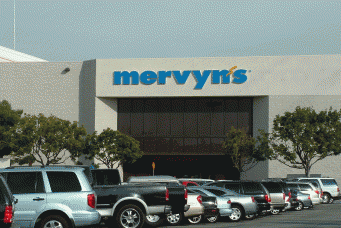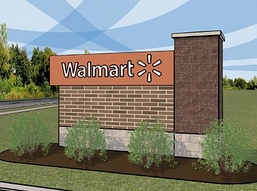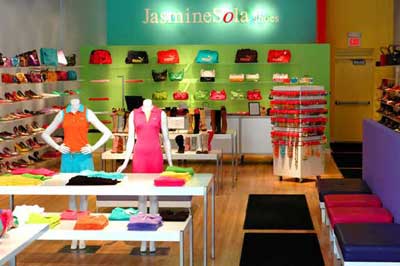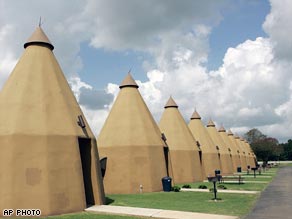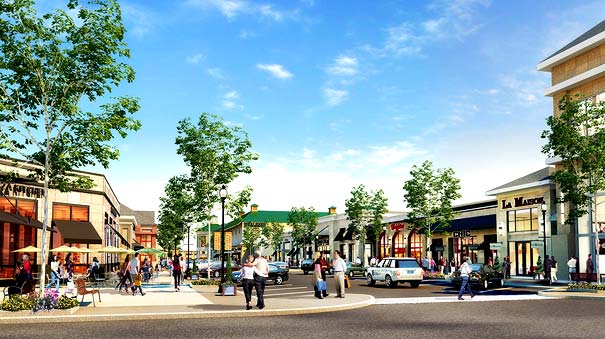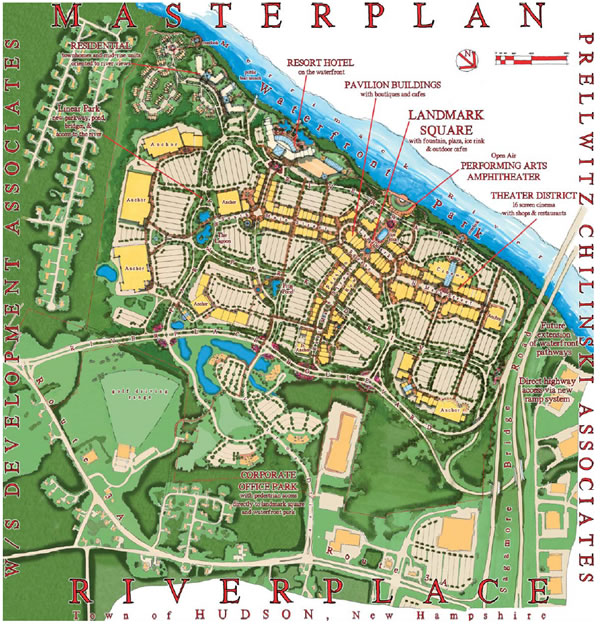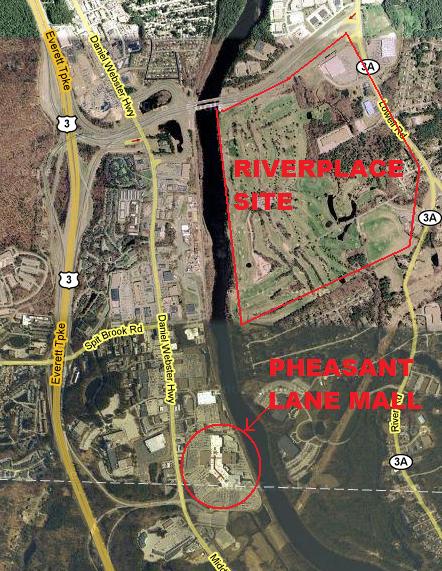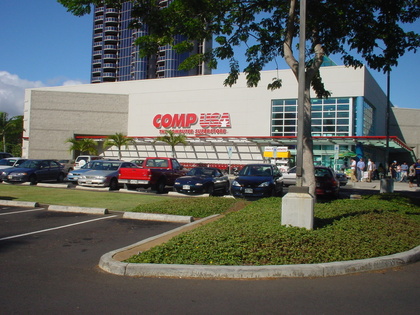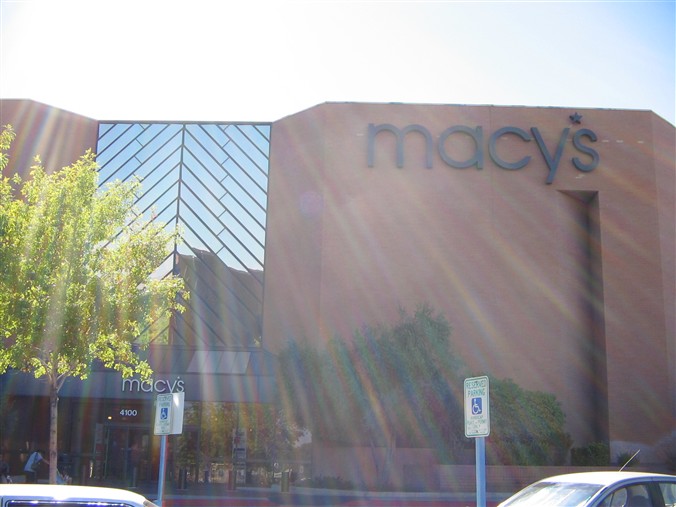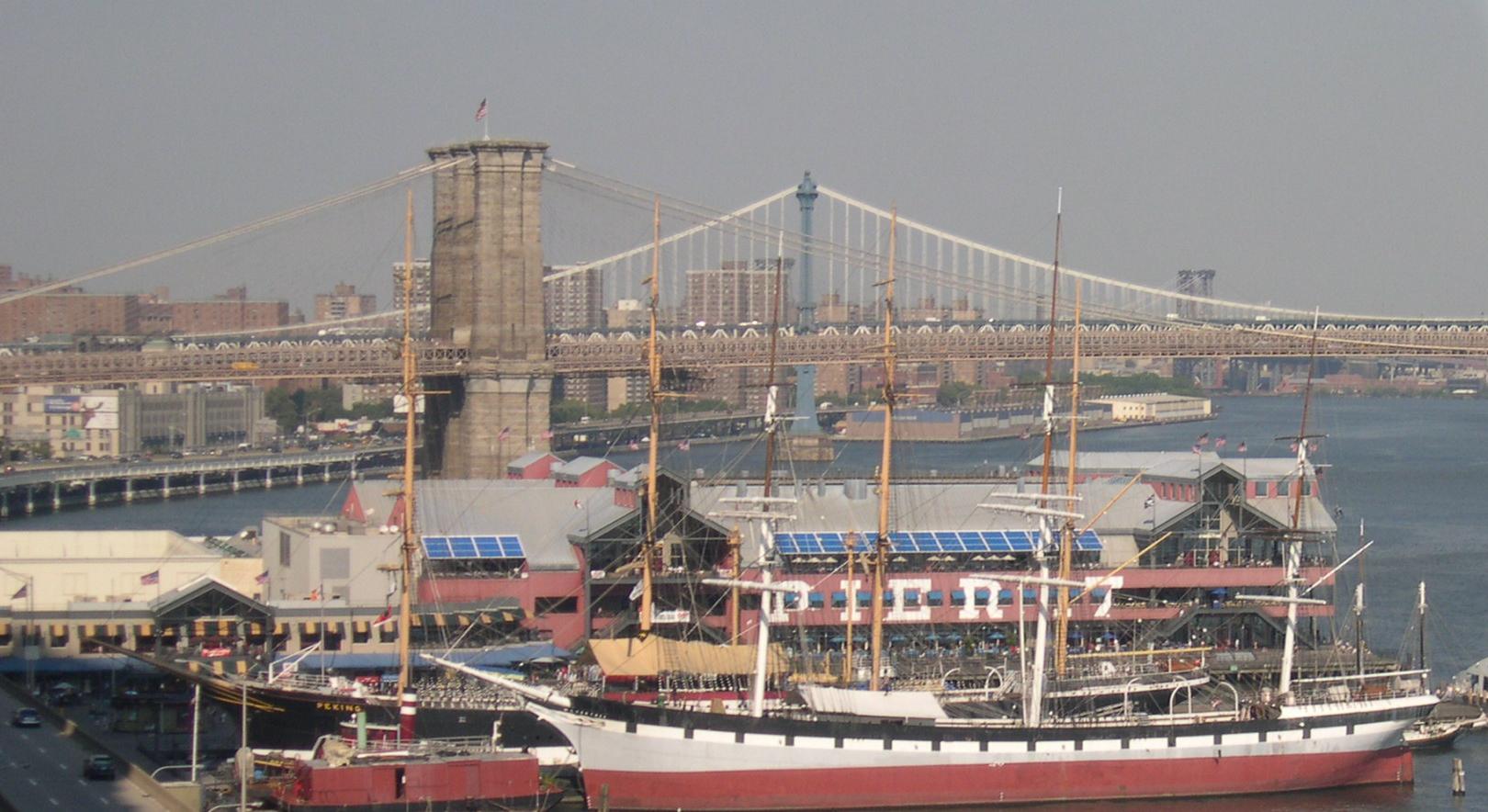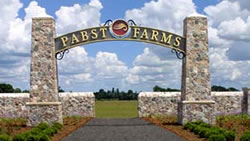
It’s been a while since we offered anything other than shopping center write-ups, and we realize that part of the advantage of having a chronological blog is the ability to post current information.
In suburban Milwaukee, Wisconsin, a large upscale regional mall proposal called Pabst Farms Town Center is tenatively back on, but this time with a different developer and possibly a different format. In October, Chicago-based General Growth Properties dropped the project, citing lack of interest for the upscale tenants the city wanted to attract, such as Nordstrom or Von Maur. Today, Doris Hajewski writes in the Milwaukee Journal-Sentinel that the city has found a new developer in Developers Diversified Realty (DDR) of Cleveland. However, DDR’s portfolio does not include high end department stores, and it was reported that the center will probably be open-air rather than enclosed as previously planned. Yet the city of Oconomowoc is repeatedly pressing that the site not be just a collection of big box stores or any other sort of bland ephemera, like the development a couple exits to the east along I-94 at WI 83 in Delafield.Personally, this turn of events is kind of a let down. The state of Wisconsin, which has an above average rate of growth, has not had a new regional mall constructed in over twenty years. In fact, it has lost several in the same span of time. More specifically to this project, Waukesha County is a fast-growing and wealthy county, with an estimate of 380,000 residents as of 2006. Waukesha County currently has one regional shopping center, located in the far eastern side of the county in Brookfield; it was constructed over thirty years ago and is a simple one-level barbell design with three anchors.
As the entirety of Waukesha County is suburban Milwaukee, residents also utilize the shopping options there, which have also dwindled in recent years and focus on Mayfair Mall in Wauwatosa and Bayshore Town Center in Glendale. However, as suburban growth has invaded Waukesha County, the county’s center of population has moved significantly west away from Milwaukee. In addition, the towns closest to the center in the “Lakes” area are some of the wealthiest in the state.
This project would simultaneously take advantage of both the center of population shift in Waukesha County and the lack of large regional centers in the area. Located in western Waukesha County with easy access to I-94 and the new WI 67 bypass around Oconomowoc, the center would draw from a large and wealthy base, including rapidly growing areas along I-94 west all the way to Madison which is only 40 minutes away and the state’s second largest population center.
So, the argument that the density is low in Oconomowoc and that no one would come is completley ludicrous. People will travel to get to this type of center, if it’s made destination-worthy. And, it sounds like it would have been and possibly will be if the city and others get their way. They definitely have the right idea, and have been planning this project for years, even working with the WI Department of Transportation upgrading the interchange there and locating a business park with a future hospital at the southern end of the interchange. I think it’s entirely appropriate for the city to send the message to developers that they don’t want another generic strip mall of big box stores; that sort of thing already exists a few miles down the road anyway and has been growing tremendously over the past several years.
In addition, the shift from an enclosed mall portion to the development to open-air may reflect popular trends right now, but let’s get a few things straight. For one, consider the average temperature in Wisconsin in January is 15 degrees. Who wants to walk around a pretend-village going store to store in the winter? Or even when it’s raining? Or really hot? That brings us to another point. Many of these open-air “Lifestyle Centers” are the same vapid looking, whitewashed village downtown, often built in suburban areas on reclaimed farmland and consist of the same group of stores often found in enclosed malls. What’s the deal with this? These developments become even more ridiculous when the concrete sea of parking lots surrounding them really makes them nothing better than glorified strip malls; they aren’t that nice. Let’s not have one of these?
In other news, Levitz Furniture appears to be closing up shop following an auction of its assets. The New York-based chain has also given many employees hints they may be permanently layed off in January, even though the winning bidder has not indicated whether they will liquidate the stores and give up, or resume doing business. Levitz has not been doing well for some time, having scaled back significantly from having a nationwide operation several years ago to focusing on core markets on the west coast and New York metropolitan area today.
And finally, a little bit of fun. We’ve unearthed a vintage mall tour from 1987 of the now-defunct Crystal Point Mall in Crystal Lake, Illinois, posted on YouTube. Located about 40 miles northwest of Chicago, Crystal Point Mall existed from 1976-1998 and was McHenry County’s only regional enclosed mall. It was anchored by Joseph Spiess and Robert Hall Village, which later became K-Mart. In 1996, Spiess went out of business and K-mart soon closed off their mall entrance, and the mall’s in-line stores slowly vacated as their leases weren’t renewed because the owner wanted a strip mall with big box stores, and not an enclosed mall. You can read more about Crystal Point Mall at Lisa’s neat retro page all about the mall, complete with photos.
